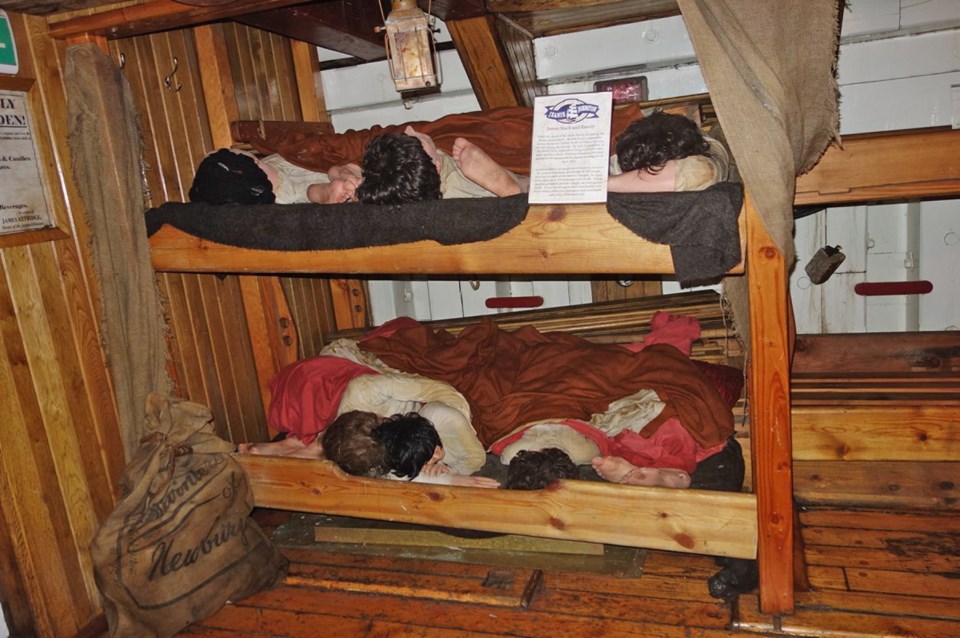Every year, millions of Americans visit Ellis Island, where their ancestors may have arrived from “the old country.” But Europe has many excellent “Ellis Islands in reverse” — museums at the places where millions said goodbye to the land of their birth.
Few things are more poignant than a person willing to sacrifice everything in pursuit of a better life. That’s the story of many hard-scrabble Europeans heading off to dreamed-of opportunities in far-off America. Others, who faced persecution or even starvation, really had no choice — it was leave or die. Museums in Ireland, Belgium, Germany, and Sweden tell some of these compelling stories.
On my most recent trip to Ireland, I checked out Dublin’s new interactive exhibit, called Epic: The Irish Emigration Museum. With so much anxiety surrounding immigration in the U.S. today, it was thought-provoking to learn how many Americans were just as worried about Irish immigrants 160 years ago.
I had never fully appreciated the Irish diaspora until my recent visit. The Irish Emigration Museum celebrates how this little island has had an oversized impact on the world (an estimated 70 million people worldwide claim Irish heritage). The museum uses a high-tech approach to explain the forces that scattered so many Irish around the globe. Historic photos of filthy tenements and early films of bustling urban scenes round out the plight of the common Irish emigrant.
The building is not far from the Jeanie Johnston Tall Ship and Famine Museum. This floating exhibit is housed in a replica of a real ship that made 16 eight-week transatlantic crossings, carrying about 200 per voyage to their new lives after the Great Potato Famine of the 1840s.
On the continent, there are more places to learn about the plight of European emigrants, particularly the cutting-edge Red Star Line Museum, in Antwerp, Belgium. In late-19th-century Europe, the Industrial Revolution and a tremendous population boom led to political instability and economic difficulties. During the great migration between 1873 and 1935, the Red Star shipping line brought some two million emigrants from Antwerp to New York City.
Antwerp was the exit point for people from all over Europe — especially Germany and eastern Europe. Jews fleeing pogroms in Tsarist Russia and later Nazi persecution in Germany — among them Irving Berlin, Golda Meir, and Albert Einstein — accounted for at least a quarter of the Red Star Line’s passengers taken across the Atlantic.
The 10-day steamer journey transported cargo, luxury travellers, and “steerage-class” peasants alike. Before boarding, emigrants underwent humiliating health exams and nervously waited while clerks processed their paperwork.
The Red Star Line Museum fills the hall that processed many who passed through Antwerp on their way to a new life. The museum combines personal stories with high-tech presentations to detail the “other end” of the Ellis Island experience. One powerful exhibit — using wraparound video screens — drives home the point that immigration remains as common today as it was in the heyday of Ellis Island. Displays profile immigrants throughout history— from the first humans who left Africa in 40,000 BC to migrant workers of today.
In Hamburg, Germany, the engaging BallinStadt Emigration Museum tells the story of those from Germany and beyond who went first to Hamburg, by train or even on foot, before boarding a ship to cross the ocean. Creative themed exhibits give a look at the origins of the five million German emigrants who passed through here, the reasons they chose to leave (from poverty to persecution), their experiences on the transatlantic ships, and their challenges forging a new life in the new land. It offers a dynamic and kid-friendly look at a powerful topic.
And the House of Emigrants in Växjö, Sweden, is a fascinating stop for anyone with Swedish ancestors. The inspiring “Dream of America” exhibit captures the experiences of the 1.3 million Swedes who sought a better life in the American promised land in the late 19th and early 20th centuries. Economic woes (and, much like in Ireland, a potato famine) wracked Sweden from the 1850s to the 1920s. Roughly 20 per cent of the men and 15 per cent of the women who were born in Sweden during the last half of the 19th century left. Rounding out the exhibit, homage is paid to prominent Swedish-Americans, including aviator Charles Lindbergh, union organizer Joe Hill, and the second man on the moon, Buzz Aldrin.
With so many of us owing our lives to ancestors who risked theirs emigrating to the U.S., it’s important to learn about their epic journey. Adding a visit to an emigration museum in Europe can also give us greater understanding toward those currently seeking refuge on our own soil.
Rick Steves (ricksteves.com) writes European travel guidebooks and hosts travel shows on public television and public radio. Email him at [email protected] and follow his blog on Facebook.


